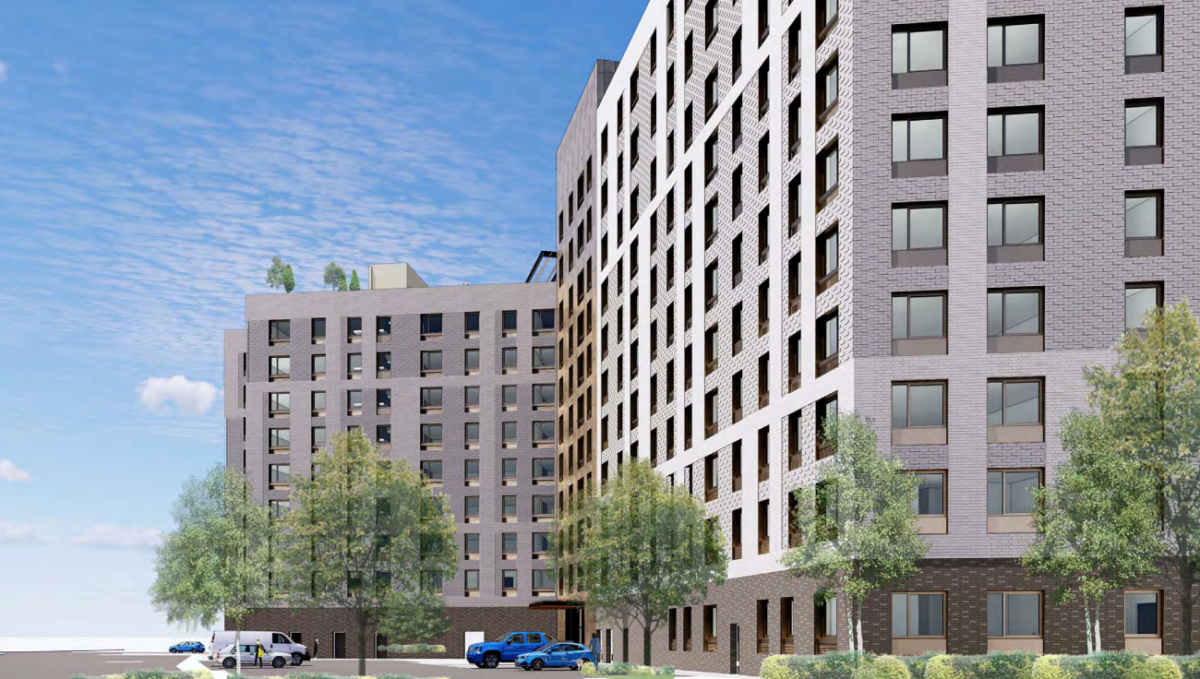Yonkers Industrial Development Agency President and CEO Ellen Lynch and Chief Fiscal Officer Melvina Carter were busy. Sandwiches appeared at 470 Nepperhan Ave, IDA HQ: a working one-hour lunch.
Lynch would focus the latter half of the lunch on the IDA big-three agenda for 2008. She began with 2007 highlights, including shovel work at the $650 million Ridge Hill mixed-use development.
“Seeing the earth move at Ridge Hill,” Lynch said. “That”™s the most dramatic thing in 2007.”
A just-closed financing and tax abatement deal for Cross County Center will see work continue there apace in 2008. The center once ruled regional retail with Gimbel”™s and John Wanamaker”™s defining shopping. With its massive remake, Cross County looks to rise to greatness again. In the same neighborhood, the gaming facility at Yonkers Raceway, now in its second year, earned praise: “The impacts have been nothing but positive,” Lynch said. “There had been talk of traffic problems. No traffic problems have materialized. It”™s been very successful in terms of tax dollars getting into the New York state education system.”
Betting on growth
The nuances of the IDA”™s world arose in a Marriott Hotel finance deal at the Southwest Executive Park recently. The city wants business accommodations; those rooms and suites, Lynch said, “attract office-space users.” It”™s a positive cycle, but the need for hotel rooms in the equation cannot be overstated.
“It costs just as much to build here as it does to build in Manhattan,” Lynch said. “But they can only get half the room rates here. So, Marriott is betting Yonkers is going to continue to grow and they will be positioned to participate in that growth. We”™ll get the much-needed business accommodations. They”™ll get through their beginning losses. We”™re here to help.” Lynch made clear the IDA does not want to own properties: “We”™re a facilitator. We”™re here to give them that nudge over the hurdle.” The IDA taps federal largesse, including HopeVI grants, toward its affordable-housing initiatives.
Lynch said: “For 2008, the Struever Fidelco Cappelli project is the number-one priority.” This is the multi-site plan that spawned a 3,000-page environmental study. Of the partnership, the Business Journal reported last summer: Richard Struever has adaptive reuse expertise regarding old buildings, notably in Baltimore; Fidelco has a strong background in inner-city development; and Louis R. Cappelli ”“ whose Ritz-Carlton just opened in White Plains ”“ has the wherewithal to make projects happen.
“It could mean we”™ll be knocking down and clearing sites,” Lynch said of the Struever Fidelco Cappelli plans. “That”™s what we need to see happen. It”™s the core of downtown redevelopment.” Among the city-making goals of this plan: a retail center with a minor-league ballpark on the roof, housing towers by the ballfield (targeting young professionals) and tonier towers on the river. This is also the plan that looks to daylight Yonkers”™ often paved-over Saw Mill River by the ballpark and at Larkin Plaza.
“A critical mass needs to be presented,” Lynch said of getting the Struever Fidelco Cappelli plans in motion. “This will get the mindset turned around about Yonkers.”
”˜A downtown core”™
Number two on Lynch”™s must-accomplish list is the rejuvenation of the city”™s northern waterfront as envisioned in the Alexander Street master plan. The parcel is home now to industry. According to the plan for the 150-acre site, it”™s about to get a trendy mixed-use zeitgeist. It is bordered north and south by rail stations, in keeping with the latest smart-growth planning strategies of live, play and commute from a central hub, without owning a car. Alexander Street would feature a marina, an esplanade, parks, with an estimated $2.3 billion in total construction costs and 1,600 jobs created for keeps when the dozers and mixers leave.
The third project on Lynch”™s list: rehabilitating Ashburton Avenue. This complements the first two, explained Lynch, with “downtown” being the common theme. On the docket: 370 fresh housing units, some as townhouses, some as garden apartments, including the 250 landscaped, low-slung units that will rise where the completely vacated and demolition-bound Mulford housing towers now stand.
“This is our biggest opportunity to create a downtown core for the city,” she said of the three projects. “You want a downtown again. It”™s been a while since it”™s been a real one and a vibrant one here.”
Carter, who had been listening and prompting the conversation with facts predicted confidently: “It”™s coming.”
“There”™s a tremendous diversity to our projects,” Lynch said. From the northern waterfront, to downtown, to the Southwest Executive Park (also home to a state-of-the-art veterinary facility; “At the IDA we”™re animal lovers, too,” Carter said), to Cross County Center, to Ridge Hill, Lynch and Carter painted a picture of a city on the move and, by all accounts, it is very much so. Even, as they pointed out last summer, the city”™s central Nepperhan Valley is getting its due respect, with artists injecting fresh blood into a solid Yonkers backbone of shops that fix and make things, sometimes in century-old masterpieces of industrial architecture. (The IDA is in a rehabbed historic building, bought for a buck, a “business incubator” in city growth parlance.)
“We”™ve hit every quadrant of the city,” Lynch said of IDA initiatives. “We have diverse housing, retail, a variety of products being offered. It”™s a very diversified mix of project types.”
“It”™s fitting because it”™s a diverse city,” Carter said.



















